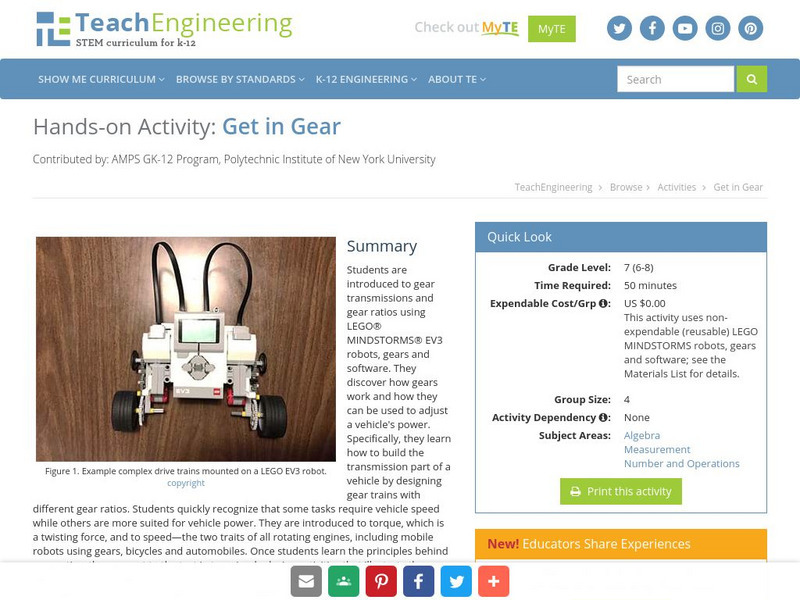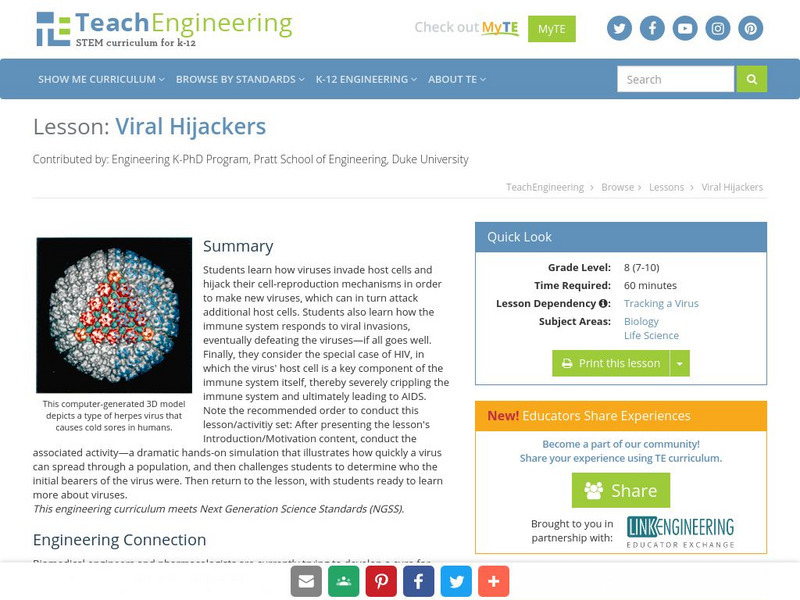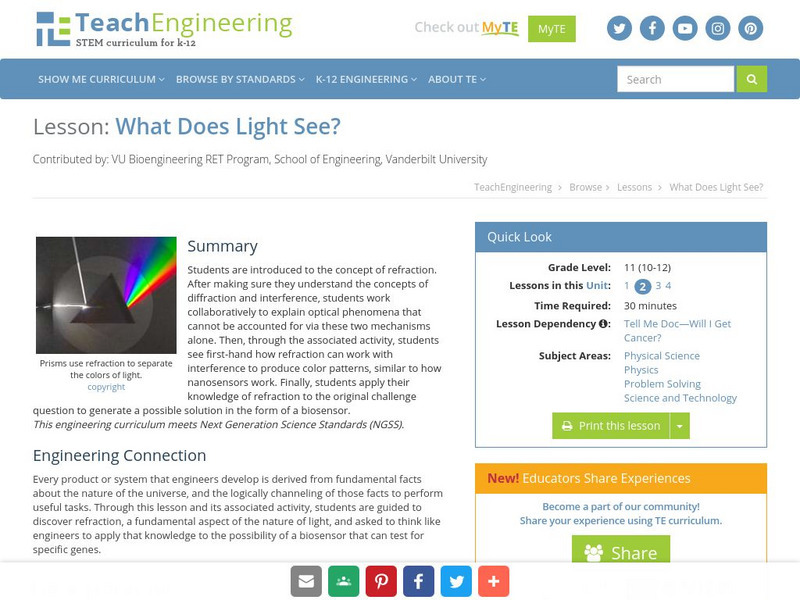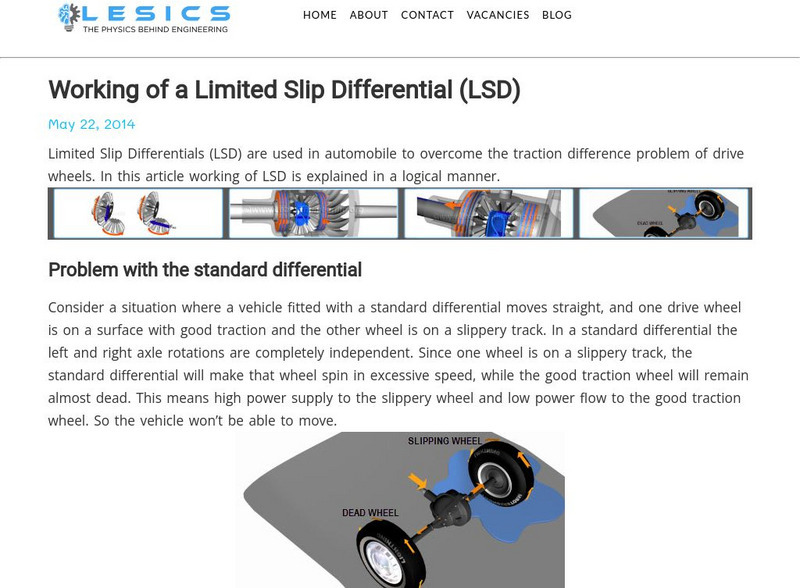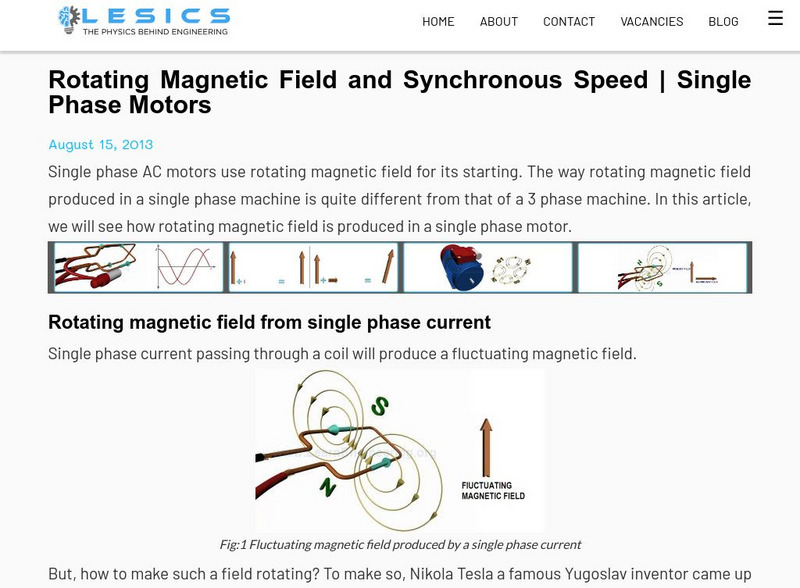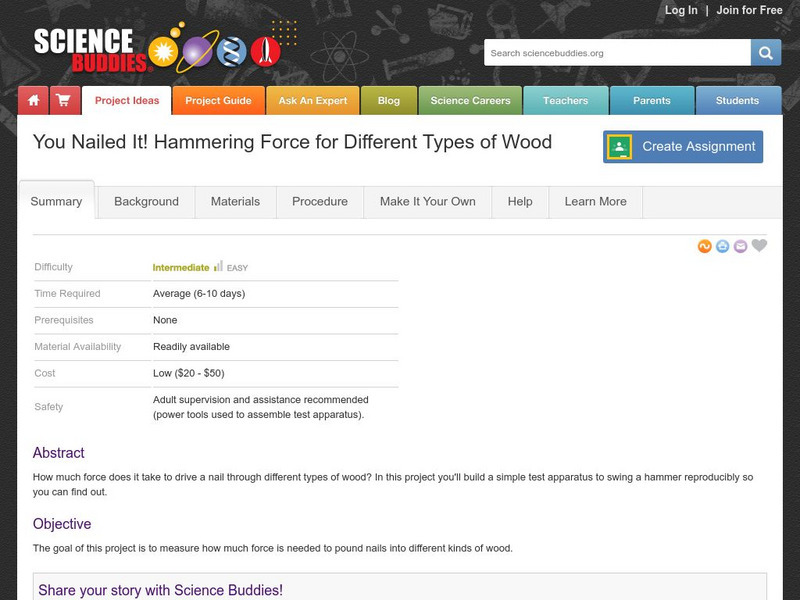TeachEngineering
Teach Engineering: It Takes Two to Tangle
Students explore the theme of conflict in literature. They learn the difference between internal and external conflict and various types of conflicts, including self against self, self against other, and self against nature or machine....
TeachEngineering
Teach Engineering: Stress, Inc.
Students explore the physical and psychological effect of stress and tension on human beings. Concepts of stress and stress management are introduced. Students discover how perception serves to fuel a huge industry dedicated to...
TeachEngineering
Teach Engineering: Rotary Encoders & Human Computer Interaction
Students learn about rotary encoders and discover how they operate through hands-on experimentation. Rotary encoders are applied in tools to determine angle measurements and for translations of angular motion. One common rotary encoder...
TeachEngineering
Teach Engineering: Get in Gear
Students discover how gears work and how they can be used to adjust a vehicle's power. Specifically, they learn how to build the transmission part of a vehicle by designing gear trains with different gear ratios.
TeachEngineering
Teach Engineering: Viral Hijackers
Students learn how viruses invade host cells and hijack the hosts' cell-reproduction mechanisms in order to make new viruses, which can in turn attack additional host cells. Students also learn how the immune system responds to a viral...
TeachEngineering
Teach Engineering: What Does Light See?
Students are introduced to the concept of refraction. After making sure they understand the concepts of diffraction and interference, students work collaboratively to explain optical phenomena that cannot be accounted for via these two...
Massachusetts Institute of Technology
Mit: Open Course Ware: Introduction to Numerical Analysis for Engineering
College-level electrical engineering course highlighting numerical analysis for engineers. This course introduces students to the formulation, methodology, and techniques for numerical solution of engineering problems. Course features...
Learn Engineering
Learn Engineering: Working of a Limited Slip Differential
A video and article explaining how cars use limited slip differential to overcome traction issues of the drive wheel. The article discusses all topics found in the video. [4:56]
Learn Engineering
Learn Engineering: Torsen Differential: How Does It Work?
This video and article explain about the patented parts of a Torsen differential which allows the outside drive wheel to rotate faster than the inner drive wheel during a turn while overcoming traction problems. The article discusses all...
Learn Engineering
Learn Engineering: Manual Transmission: How It Works?
Learn about why a transmission is required in automobiles in this video and article, and how manual transmissions work. The article discusses all topics found in the video. [6:05]
Learn Engineering
Learn Engineering: Working of Single Phase Induction Motors
A video and article giving information about how single phase induction motors function and what parts they contain. The accompanying article explains the concepts further using detailed illustrations. [4:06]
Learn Engineering
Learn Engineering: How Does an Induction Motor Work?
An article and video about the most commonly used electrical machine called an induction motor. Learn about the parts of the motors that allow the motor to function. [4:43]
Learn Engineering
Learn Engineering: Single Phase Motors
Learn about how a single phase motor produces a rotating magnetic field in this video. The accompanying article discusses topics found in the video. [2:00]
Learn Engineering
Learn Engineering: Understanding Rotating Magnetic Field & Synchronous Speed
Get information about rotating magnetic fields and how electric machines use them for their operation. Discusses synchronous speed and number of poles on an electrical machine. The accompanying article discusses the topics found in the...
Science Buddies
Science Buddies: Gears Go Round!
Music boxes, bicycles, and clocks all have one thing in common: GEARS. You might say that gears make the world turn, since they are in so many mechanical instruments. How do they work and how do you know which gears to use? Find out in...
Science Buddies
Science Buddies: You Nailed It! Hammering Force for Different Types of Wood
This Science Buddies project explains how to build a mechanism that will reproducibly swing a hammer so you can determine the amount of force needed to hammer a nail through various densities of wood. The Science Buddies project ideas...
Science Buddies
Science Buddies: Fractography: The Way Things Break
When something goes wrong, do you like to try to figure out why? Engineers do this all the time. They even have a fancy name for it: failure analysis. Understanding how different materials break is an important part of failure analysis....
Technovation
Curiosity Machine: Challenges: Design a Mechanical Pegboard
Are you ready to challenge yourself to make a peg board that lets you test multiple linkage systems and movements? This site contains not only the challenge but a platform to document your process as you solve the problem.
Technovation
Curiosity Machine: Challenges: Build a Cam Mechanism
Create a simple machine that transfers a rotational motion into linear vertical motion with this challenge. The site gives more details on the challenge as well as tips and place to document your design process. Teachers can find a...
Technovation
Curiosity Machine: Challenges: Build a Joint Mechanism
This website challenges students to make a simple machine out of a straw to mimic the movement of joints in your body. The website includes a lesson plan, tips, and a place for students to document their design process.
TeachEngineering
Teach Engineering: Using Hooke's Law to Understand Materials
Students explore the response of springs to forces as a way to begin to understand elastic solid behavior. They gain experience in data collection, spring constant calculation, and comparison and interpretation of graphs and material...
University of Houston
University of Houston: Engines of Our Ingenuity: No. 1031: Antikythera Mechanism
This site contains the history of and a description of the Antikythera Mechanism in written and audio form.
Cosmo Learning
Cosmo Learning: Engineering Mechanics
A collection of video lectures from a course introducing students to engineering mechanics. Webpage includes forty lectures from a professor at the National Programme on Technology Enhanced Learning. Lectures vary in length and cover...
Cosmo Learning
Cosmo Learning: Mechanical Vibrations
A collection of video lectures from a course on mechanical vibrations. Webpage includes forty lectures from a professor at the National Programme on Technology Enhanced Learning. Lectures vary in length and cover topics like harmonic...





